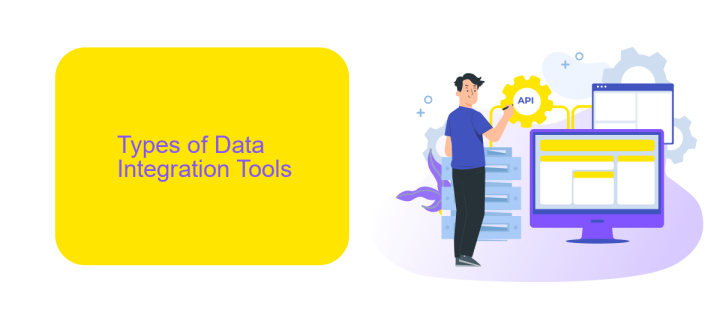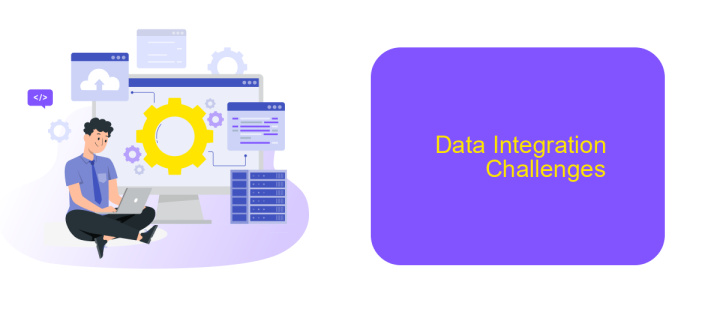Tools for Data Integration
In today's data-driven world, seamless data integration is crucial for informed decision-making and operational efficiency. Tools for data integration enable organizations to consolidate disparate data sources, ensuring a unified view of information. This article explores various data integration tools, highlighting their features, benefits, and how they can transform raw data into valuable insights to drive business success.
Data Integration Tools Overview
Data integration tools are essential for organizations looking to streamline their data management processes. These tools help in combining data from various sources, ensuring it is accurate, consistent, and accessible for analysis and decision-making. The right data integration tool can significantly enhance operational efficiency and provide valuable insights.
- ETL (Extract, Transform, Load) Tools
- Data Warehousing Solutions
- Cloud-based Integration Platforms
- API Management Tools
- Real-time Data Integration Solutions
One notable service in this domain is ApiX-Drive, which simplifies the integration process by allowing users to connect various applications and automate workflows without the need for coding. ApiX-Drive supports a wide range of applications and provides a user-friendly interface, making it an excellent choice for businesses looking to enhance their data integration capabilities efficiently.
Types of Data Integration Tools

Data integration tools come in various types, each designed to meet specific needs and scenarios. ETL (Extract, Transform, Load) tools are among the most common, allowing users to extract data from multiple sources, transform it into a suitable format, and load it into a target system. Examples include Talend and Apache Nifi. ELT (Extract, Load, Transform) tools, on the other hand, load data into a target system before transforming it, which is useful for big data environments. Popular ELT tools include Google BigQuery and Amazon Redshift.
Another category is data replication tools, which focus on copying data from one system to another in real-time or at scheduled intervals. Tools like Fivetran and Stitch are notable for this purpose. API-based integration platforms, such as ApiX-Drive, offer a flexible approach by connecting various applications and automating workflows without the need for extensive coding. These platforms simplify the integration process, making it accessible even to non-technical users. Lastly, iPaaS (Integration Platform as a Service) solutions like MuleSoft and Dell Boomi provide comprehensive integration capabilities, including data mapping, transformation, and orchestration, all within a cloud-based environment.
Data Integration Features

Data integration is a critical process for businesses aiming to consolidate information from various sources into a unified view. This process ensures that data is consistent, accurate, and accessible across different systems and applications. Effective data integration tools offer a range of features that facilitate this complex task.
- Data Mapping: This feature allows users to define how data from different sources should be transformed and loaded into the target system.
- Real-Time Integration: Enables the synchronization of data in real-time, ensuring that the most current information is available.
- Data Quality Management: Tools often include functionalities to clean and validate data, ensuring its accuracy and reliability.
- API Integration: Services like ApiX-Drive simplify the process of connecting various applications via APIs, automating data flows without the need for coding.
- Scalability: The ability to handle increasing volumes of data as the business grows is crucial for long-term success.
By leveraging these features, businesses can streamline their operations, enhance decision-making, and maintain a competitive edge. Tools like ApiX-Drive make it easier to set up and manage integrations, reducing the complexity and time required for effective data management.
Data Integration Challenges

Data integration presents several challenges that organizations must address to ensure seamless data flow across systems. One of the primary issues is data inconsistency, which arises when data from different sources do not match or align correctly. This inconsistency can lead to errors and misinterpretations, impacting decision-making processes.
Another significant challenge is data security. As data moves between systems, it becomes vulnerable to breaches and unauthorized access. Ensuring robust security measures are in place to protect sensitive information is crucial. Additionally, handling large volumes of data efficiently can be overwhelming, requiring advanced tools and technologies.
- Data inconsistency and quality issues
- Security and privacy concerns
- Handling large volumes of data
- Integration of diverse data formats
- Real-time data processing
Tools like ApiX-Drive can help mitigate these challenges by providing automated solutions for data integration. ApiX-Drive allows for seamless connectivity between various applications and services, ensuring data consistency and security. By leveraging such tools, organizations can streamline their data integration processes, leading to more accurate and timely insights.
- Automate the work of an online store or landing
- Empower through integration
- Don't spend money on programmers and integrators
- Save time by automating routine tasks
Best Practices for Data Integration
Effective data integration requires careful planning and execution. Start by clearly defining the objectives and scope of your data integration project. Identify the data sources, data types, and the desired outcomes. Ensure that the data is clean, consistent, and up-to-date before integrating it. Utilize data profiling tools to understand the quality of the data and address any discrepancies. Establish robust data governance policies to maintain data integrity and security throughout the integration process.
Choosing the right tools is crucial for seamless data integration. Opt for scalable and flexible solutions like ApiX-Drive, which offers easy-to-use interfaces and supports a wide range of applications. Automate repetitive tasks and workflows to minimize errors and improve efficiency. Regularly monitor the performance of your integration processes and make necessary adjustments. Documenting the integration steps and maintaining clear communication among team members will ensure a smooth and successful data integration experience.
FAQ
What is data integration?
Why is data integration important?
What are the common challenges in data integration?
How can automation help in data integration?
What features should I look for in a data integration tool?
Time is the most valuable resource in today's business realities. By eliminating the routine from work processes, you will get more opportunities to implement the most daring plans and ideas. Choose – you can continue to waste time, money and nerves on inefficient solutions, or you can use ApiX-Drive, automating work processes and achieving results with minimal investment of money, effort and human resources.


